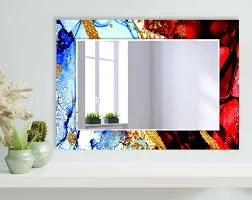

The Allure of Frosted Glass Automation A Blend of Functionality and Aesthetics
In the modern era of architecture and interior design, the trend of incorporating sophisticated materials into everyday elements has become increasingly popular. Among these materials, frosted glass stands out not only for its unique aesthetic appeal but also for its versatile functionality. The advent of automated systems has revolutionized how we interact with architectural features, and integrating automation into frosted glass installations opens the door to a myriad of creative possibilities.
Frosted glass, characterized by its translucent finish, allows light to permeate spaces while providing privacy—an essential balance that has made it a preferred choice for residential and commercial applications alike. It is often used in bathrooms, conference rooms, and as room dividers in open-concept living spaces. The beauty of frosted glass lies in its ability to diffuse light, creating a serene ambiance without compromising on privacy.
The Allure of Frosted Glass Automation A Blend of Functionality and Aesthetics
One of the most significant benefits of automated frosted glass is its efficiency in maintaining an ideal environment. In commercial settings, such as offices or conference rooms, the ability to adjust glass opacity can enhance focus and reduce distractions. For instance, during meetings, individuals can switch the glass to a frosted condition, minimizing outside interruptions while allowing natural light to illuminate the room. Once the meeting is over, the glass can be returned to its transparent state, encouraging a more open and collaborative workspace.

Moreover, automated frosted glass systems can be synchronized with smart home technologies. Integrating these systems into the Internet of Things (IoT) allows users to automate glass settings based on their routines or through voice commands. Imagine arriving home after a long day—your smart home can sense your presence and gradually switch the glass windows in your living room from transparent to frosted mode, providing a sense of calm and privacy without a single movement on your part.
From a design perspective, the incorporation of automated frosted glass opens up new avenues for creativity. Architects and designers can experiment with dynamic spaces that adapt to the inhabitants' needs. Large-scale installations, such as frosted glass facades or atrium walls, can enhance the aesthetic appeal of a building while simultaneously serving practical purposes. Sculptural and innovative designs can be achieved, capturing the light in ways traditional materials cannot.
Energy efficiency is another compelling reason to embrace automated frosted glass. These systems can be designed to help regulate temperature and light levels within a building, contributing to sustainability goals. By reducing reliance on artificial lighting, businesses can potentially decrease their energy costs while maintaining a comfortable atmosphere. This dual focus on functionality and environmental responsibility reflects a growing trend in contemporary architecture.
In conclusion, the fusion of frosted glass and automation is a testament to how technology can enhance our living and working environments. By combining aesthetic charm with practical benefits, automated frosted glass installations offer a unique solution that caters to privacy, energy efficiency, and design innovation. As architects and designers continue to explore the capabilities of this versatile material, the possibilities only seem to grow, paving the way for more responsive and engaging spaces in the future. Whether in a home, office, or public space, the allure of frosted glass automation is undoubtedly a trend worth embracing.